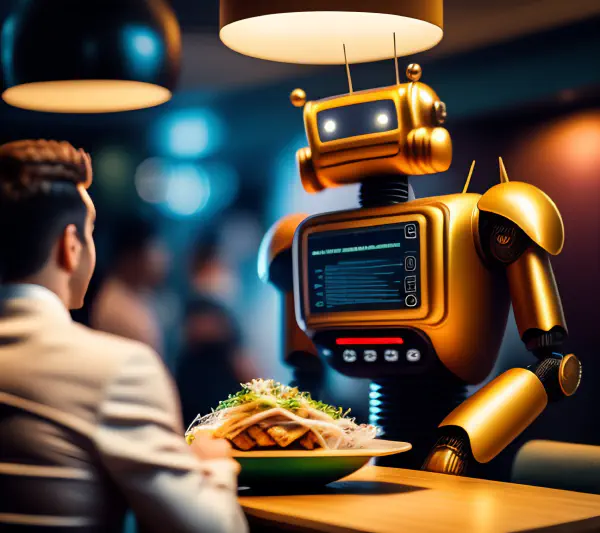
In today’s rapidly evolving technological landscape, the interaction between humans and robots is becoming increasingly common. Whether in manufacturing, healthcare, or daily life, robots are playing pivotal roles in assisting and collaborating with humans. A crucial aspect of this interaction is the ability of robots to perceive and respond to human gestures, facial expressions, and verbal commands. Image processing, an integral part of computer vision, plays a central role in enabling robots to understand and interact with humans effectively.
In this blog, we will explore how image processing is revolutionizing human-robot interaction and why it is especially significant for service robots and collaborative robots (cobots).
The Basics of Image Processing
Image processing is a field within computer vision that focuses on the analysis and manipulation of visual information from images or video streams. It involves a wide range of tasks, including image recognition, object tracking, facial recognition, and gesture detection. Robots equipped with cameras and image processing capabilities can leverage these techniques to interpret their surroundings and recognize human cues.
Human-Robot Interaction in Various Domains
- Service Robots
- Service robots are designed to assist humans in various tasks, such as cleaning, delivery, and caregiving. For these robots to be truly helpful, they need to understand human instructions and adapt to dynamic environments. Image processing enables service robots to:
- Voice and Face Recognition
- By analyzing facial features and voice patterns, robots can identify specific individuals and tailor their responses accordingly. This is especially important in healthcare settings where elderly patients may need personalized care.
- Object Recognition
- Service robots can recognize objects and their locations, helping them perform tasks like fetching specific items or cleaning up a room.
- Obstacle Avoidance
- Image processing helps robots detect and avoid obstacles, ensuring safe and efficient navigation in crowded or cluttered spaces.
- Voice and Face Recognition
- Service robots are designed to assist humans in various tasks, such as cleaning, delivery, and caregiving. For these robots to be truly helpful, they need to understand human instructions and adapt to dynamic environments. Image processing enables service robots to:
- Collaborative Robots (Cobots)
- Cobots are designed to work alongside humans in shared workspaces, such as manufacturing plants. Image processing is pivotal for cobots to ensure safety and efficiency.
- Human Detection
- Cobots equipped with image processing can detect the presence of humans and adjust their speed and movements to avoid collisions.
- Gesture Recognition
- Workers can communicate with cobots using hand gestures, making the collaboration more intuitive and efficient.
- Quality Control
- In manufacturing, cobots can use image processing to inspect and identify defects in products, ensuring high-quality production.
- Human Detection
- Cobots are designed to work alongside humans in shared workspaces, such as manufacturing plants. Image processing is pivotal for cobots to ensure safety and efficiency.
Challenges in Image Processing for Human-Robot Interaction
While image processing has the potential to revolutionize human-robot interaction, it comes with its set of challenges:
- Real-time Processing
- To maintain seamless interaction, robots must process images and video feeds in real-time, requiring robust hardware and algorithms for efficient computation.
- Environmental Variability
- Different lighting conditions, variable backgrounds, and occlusions can pose challenges in image analysis. Robots must be trained to adapt to these environmental changes.
- Privacy Concerns
- As robots capture and process visual data, privacy concerns arise. Regulations and ethical considerations are vital for ensuring responsible use.
- Accuracy and Safety
- Incorrect image processing can lead to errors, potentially hazardous situations, or misunderstandings between robots and humans. Ensuring high accuracy is essential.
The Future of Human-Robot Interaction
As technology advances, the capabilities of robots in human-robot interaction are set to improve further. With the integration of artificial intelligence, machine learning, and deep learning, robots will become better at understanding and responding to human cues. Enhanced natural language processing will enable more intuitive verbal commands, while facial recognition algorithms will become more accurate and capable of discerning emotions. In the future, we can expect even more seamless and efficient interactions with robots.
Conclusion
Image processing is undeniably a cornerstone of human-robot interaction, making it possible for robots to recognize and respond to human gestures, facial expressions, and verbal commands. The applications span various domains, from service robots providing assistance and companionship to collaborative robots working side by side with humans in manufacturing. Despite the challenges, the future looks promising, with continued advancements in technology and AI, ensuring that human-robot interaction becomes more natural, safe, and efficient. As the field of image processing continues to evolve, we can expect to witness even more remarkable breakthroughs in this exciting and dynamic field.